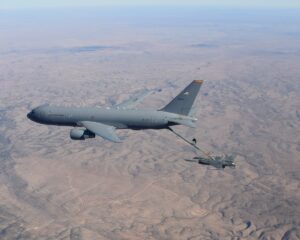
The U.S. Air Force is to ask lawmakers to reduce the number of tankers that the service must have to face the threat from China and to carry out other service responsibilities, Air Force Secretary Frank Kendall said on June 1. "We've got a cap of 479 [tankers], and we're going to ask the Congress to let us go down to 455, and we think that's adequate to deal with the [China] pacing challenge but also do the other things…














